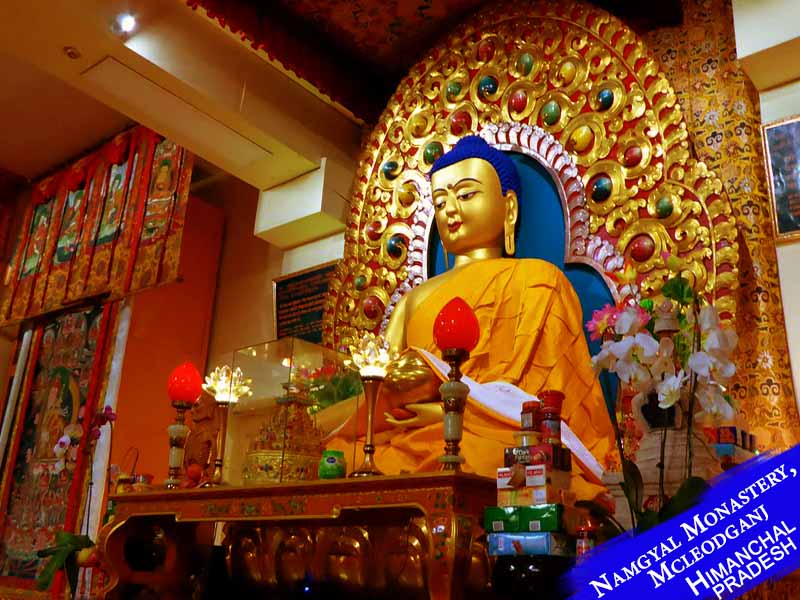OVERVIEW
Dharamshala, nestled in the serene hills of Himachal Pradesh, India, is a significant destination for Buddhist tourism. Known as the "Little Lhasa," it is the abode of His Holiness the 14th Dalai Lama and a hub for Tibetan refugees. With its spiritual ambiance, breathtaking landscapes, and monastic institutions, Dharamshala offers a unique and immersive experience for Buddhist pilgrims and travelers alike. In this comprehensive guide to Buddhist tourism in Dharamshala, we will explore the city's major Buddhist attractions, monasteries, teachings, and the impact of Tibetan culture on the region.
1. Introduction to Dharamshala and Tibetan Buddhism:
Dharamshala is divided into two parts: Lower Dharamshala and Upper Dharamshala (McLeod Ganj). Lower Dharamshala is the main commercial area, while McLeod Ganj is the center of Tibetan culture and Buddhism. After the Chinese occupation of Tibet in 1959, the Dalai Lama sought refuge in India and eventually settled in McLeod Ganj, making it the de facto capital of the Tibetan government-in-exile.
2. The Residence of His Holiness the Dalai Lama:
A pilgrimage to Dharamshala is incomplete without paying homage to His Holiness the 14th Dalai Lama. His residence, known as the Tsuglagkhang Complex, is the main temple and assembly hall. The complex also houses the Namgyal Monastery, where monks engage in prayers and spiritual activities. Visitors can attend the Dalai Lama's teachings and public talks when he is in Dharamshala.
3. Namgyal Monastery:
Namgyal Monastery is the personal monastery of the Dalai Lama, housing over 200 monks. It is known for its extensive rituals, practices, and preservation of Tibetan Buddhist traditions. Travelers can participate in various ceremonies and gain insights into the monastic life and Buddhist teachings.
4. The Library of Tibetan Works and Archives (LTWA):
The LTWA is a treasure trove of Tibetan literature, history, and culture. It houses a vast collection of ancient manuscripts, rare texts, and valuable artifacts, making it a significant institution for preserving and promoting Tibetan heritage.
5. Norbulingka Institute:
Located in Dharamshala's outskirts, the Norbulingka Institute is a center for preserving traditional Tibetan art and culture. The institute trains artisans in various crafts like thangka painting, wood carving, and metalwork. Visitors can witness artists at work and explore the beautifully landscaped gardens.
6. Tushita Meditation Centre:
Tushita is a renowned meditation center that offers courses on Buddhist philosophy and meditation techniques. It attracts spiritual seekers from around the world who come to learn and practice meditation in the serene ambiance of the Dhauladhar mountains.
7. Gyuto Monastery:
Gyuto Monastery, situated near Dharamshala, is famous for its unique Tantric rituals and throat-singing (overtone chanting) performances by the monks. The monastery follows the Gelugpa tradition of Tibetan Buddhism and offers visitors an opportunity to witness traditional ceremonies.
8. Kangra Valley and Triund Trek:
For nature enthusiasts, a trek to Triund is a must-do activity in Dharamshala. The Triund trek starts from McLeod Ganj and offers mesmerizing views of the Kangra Valley and the snow-capped Dhauladhar range. The serene surroundings provide an ideal setting for meditation and self-reflection.
9. Tibetan Cultural Performances:
Experience the rich Tibetan cultural heritage through cultural performances organized by various institutions in Dharamshala. These performances showcase traditional dances, music, and theatrical acts, providing visitors with a glimpse into the vibrant Tibetan culture.
10. Tibetan Handicrafts and Souvenir Shopping:
Dharamshala's markets are filled with Tibetan handicrafts, thangka paintings, prayer flags, and Buddhist artifacts. Visitors can shop for souvenirs, authentic Tibetan clothing, and unique artifacts as a memory of their spiritual journey.
11. Tibetan Food and Cuisine:
Indulge in the flavors of Tibet at the numerous Tibetan restaurants and cafes in Dharamshala. Savor momos (dumplings), thukpa (noodle soup), butter tea, and other traditional Tibetan delicacies.
12. Engaging in Volunteering Opportunities:
Many organizations in Dharamshala offer volunteering opportunities in fields such as education, healthcare, and community development. Engaging in volunteer work is a meaningful way to contribute to the local community and gain a deeper understanding of Tibetan culture.
13. Attending Buddhist Festivals:
Dharamshala hosts various Buddhist festivals and celebrations throughout the year. Losar (Tibetan New Year), Buddha Purnima, and the Kalachakra Initiation are some of the important events that attract thousands of devotees and visitors.
14. Yoga and Wellness Retreats:
In addition to Buddhist teachings, Dharamshala offers an array of yoga and wellness retreats. Visitors can participate in yoga sessions, meditation classes, and healing therapies to rejuvenate the mind, body, and soul.
15. Responsible Tourism and Ethical Considerations:
As a responsible traveler, it is essential to respect local customs, traditions, and the environment. Dharamshala's spiritual and cultural significance requires visitors to be mindful of their actions and conduct during their stay.
Conclusion:
Dharamshala, with its deep-rooted Tibetan Buddhist culture and serene natural beauty, offers a transformative experience for Buddhist pilgrims and travelers seeking spiritual enrichment. From visiting the Dalai Lama's residence to exploring monasteries, engaging in volunteer work, and immersing oneself in the teachings of Buddhism, Dharamshala beckons with its spiritual allure and captivating charm, leaving a lasting impression on all who embark on this journey of self-discovery.
